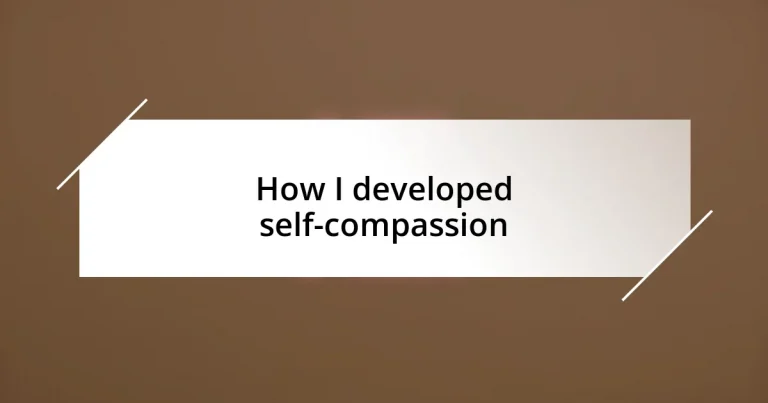Key takeaways:
- Self-compassion involves treating oneself with kindness, acknowledging shared human experiences, and practicing mindfulness.
- Recognizing and tracking self-criticism patterns is essential for fostering self-kindness and shifting negative self-talk into constructive feedback.
- Implementing mindfulness techniques, such as breathing exercises and journaling, can help manage overwhelming emotions and nurture self-compassion.
- Practicing self-kindness, such as writing “Dear Self” letters or gratitude for imperfections, enhances self-acceptance and resilience in daily life.
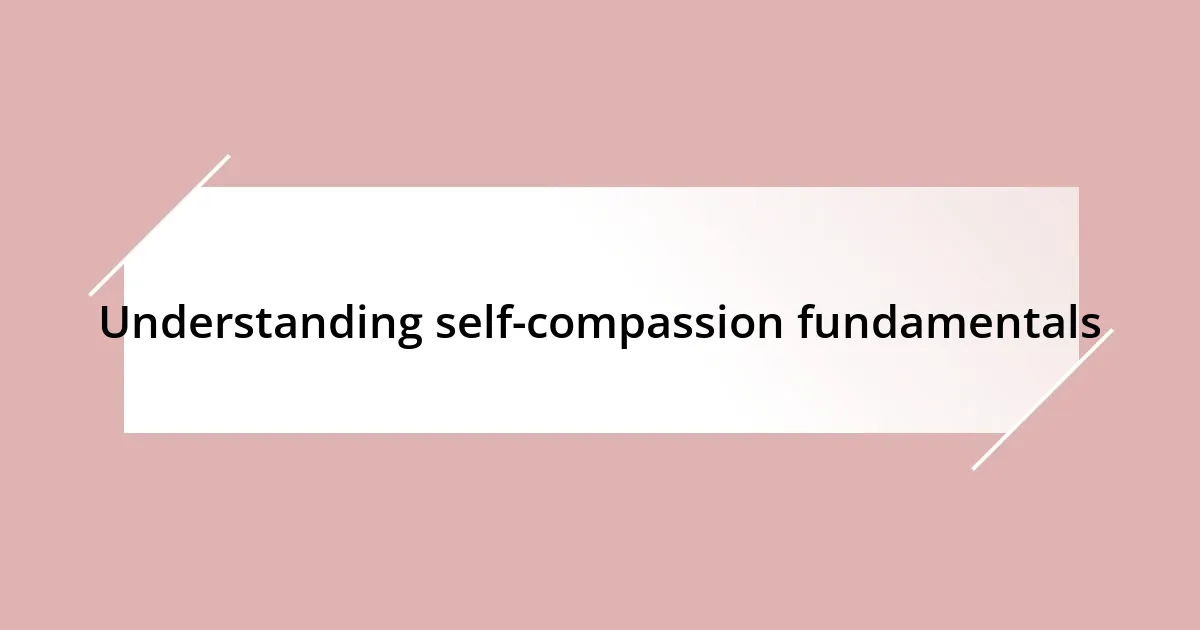
Understanding self-compassion fundamentals
Self-compassion is fundamentally about treating ourselves with the same kindness and understanding we would extend to a dear friend. I remember a time when I faced a significant setback; instead of berating myself, I started asking, “What would I say to someone I care about in this situation?” This shift in perspective made all the difference.
At its core, self-compassion involves three key elements: self-kindness, common humanity, and mindfulness. I often felt like I was alone in my struggles, but embracing the idea that everyone experiences hardship helped me realize that imperfection is part of being human. Have you ever stopped to consider how shared experiences can lighten the burden of pressure we place on ourselves?
Mindfulness is about recognizing our feelings without over-identifying with them. For me, when I noticed a wave of self-doubt washing over me, instead of sinking into it, I learned to acknowledge it with a gentle nod, almost like saying, “I see you, and it’s okay.” This approach transformed my inner dialogue, allowing me space to breathe and reflect rather than spiral into negativity.
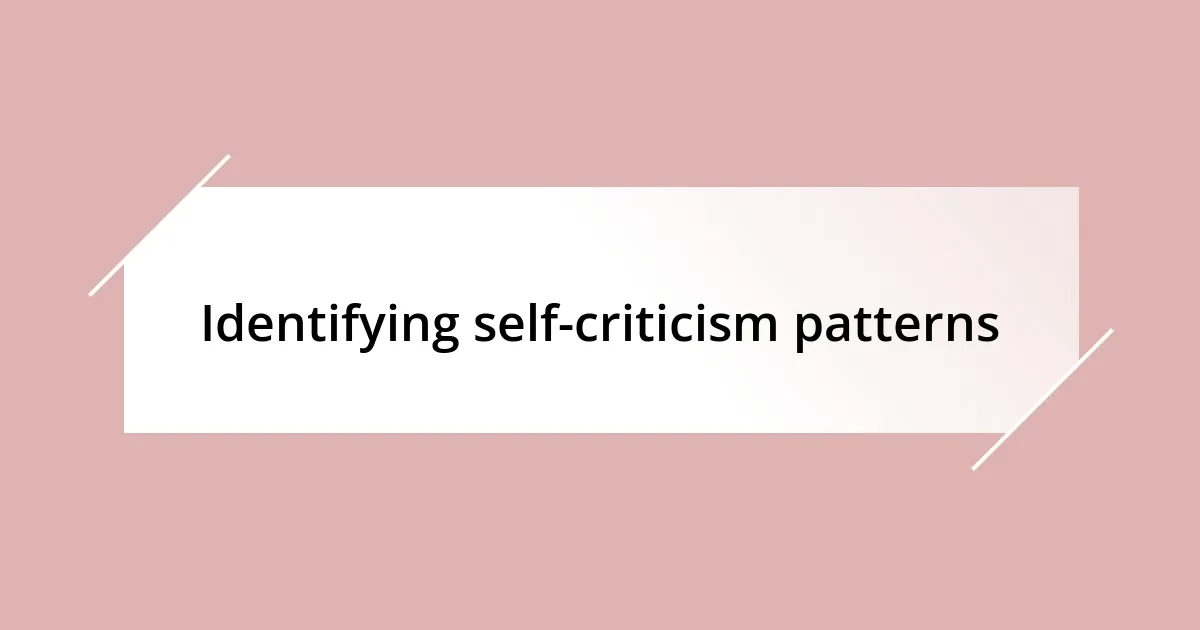
Identifying self-criticism patterns
Recognizing self-criticism patterns in my life was pivotal in developing self-compassion. As I began to pay attention, I noticed that my inner dialogue often mirrored harsh criticism, especially during challenging situations. For instance, when I made a mistake at work, instead of simply acknowledging the error, I’d replay it over and over in my head, labeling myself as “incompetent.” This behavior made me realize how ingrained these patterns were, and recognizing them was the first step toward change.
It often surprised me how automatic these negative thoughts were. They would pop up uninvited, often triggered by small mistakes or moments of perceived failure. I remember once feeling defeated after a presentation; instead of celebrating my effort, I found myself saying, “I should have done better.” By listing these criticisms and becoming aware of their frequency, I learned to shift my perspective. Ask yourself: What triggers your self-criticism? This isn’t just about identifying the pattern—it’s about sparking a desire for self-kindness instead.
Tracking my self-criticism allowed me to challenge those thoughts constructively. For example, when I found myself thinking, “I always mess things up,” I started countering that with evidence of my successes. Just saying it out loud shifted my perspective. Over time, this practice softened the sting of self-berating thoughts and created space for more understanding and grace in how I treated myself.
| Self-Criticism Pattern | Description |
|---|---|
| Perfectionism | The relentless pursuit of perfection, leading to constant dissatisfaction. |
| Negative Self-Talk | Harsh internal dialogue that undermines self-worth. |
| Comparisons | Judging oneself against others, often leading to feelings of inadequacy. |
| Overgeneralization | Seeing a single negative event as a long-lasting pattern. |
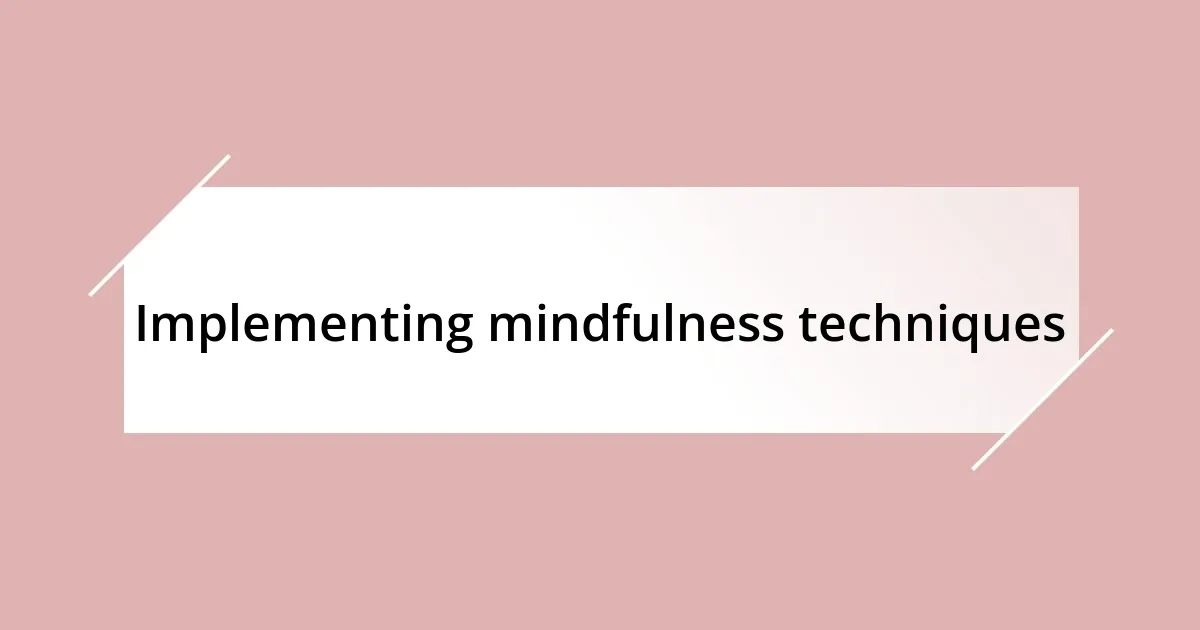
Implementing mindfulness techniques
Implementing mindfulness techniques was a game changer for me. I discovered the power of simply being present with my thoughts and emotions, rather than getting swept away by them. One particular moment stands out: during a particularly stressful day, I decided to take five minutes to focus on my breath. That gentle act grounded me in a way I hadn’t experienced before, easing the tension and allowing me to face my challenges with renewed clarity.
Here are some mindfulness techniques I’ve found helpful in nurturing self-compassion:
- Breathing exercises: Focusing on my breath helped me create a buffer against overwhelming emotions.
- Body scan: This involves paying attention to different parts of my body, releasing any tension I noticed.
- Journaling: Writing down my feelings provided a safe space for expression and reflection, helping me understand myself better.
- Mindful walking: I find that taking a stroll while being present in the moment—feeling the ground beneath my feet and observing my environment—can reset my mind.
Each technique has its own unique benefits, and incorporating them into my daily routine has changed how I approach difficult moments. Over time, I’ve built a toolkit that allows me to respond to my inner critic with compassion and understanding, rather than fear or avoidance.
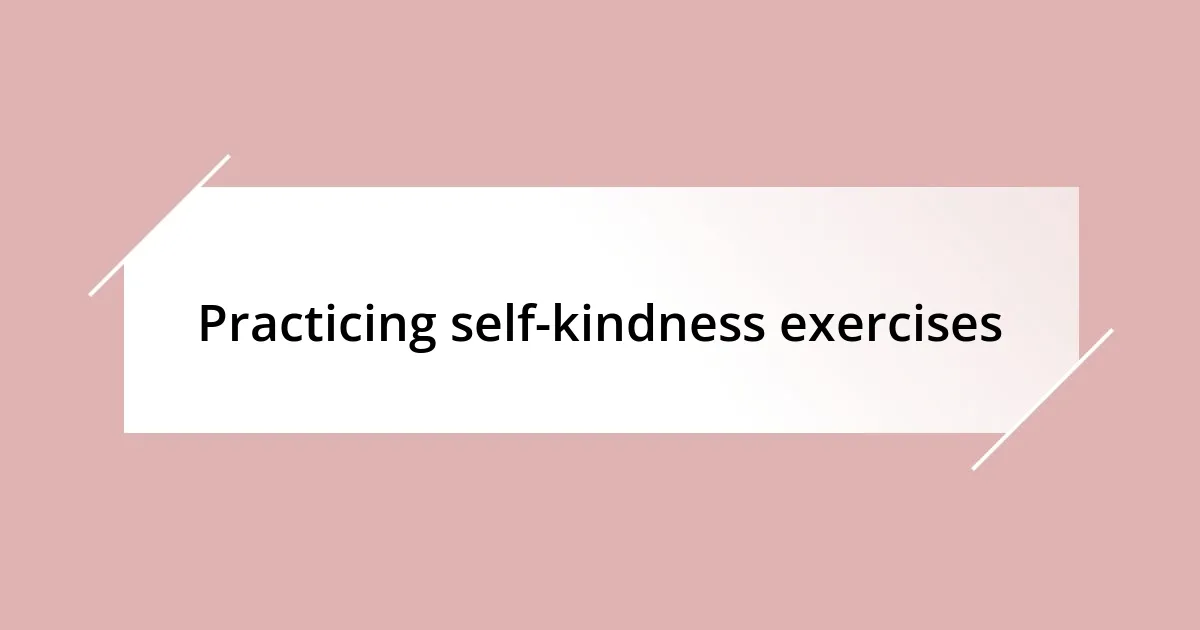
Practicing self-kindness exercises
Practicing self-kindness exercises has been transformative for me. One simple exercise I love is the “Dear Self” letter, where I write a letter to myself as if I were my best friend. It’s strange at first, but finding the right words to encourage and support myself has opened my heart in ways I never expected. Have you ever tried speaking to yourself with the same warmth you’d extend to someone you care deeply about? When I started doing this, it felt like I was finally giving myself the permission to be gentle and forgiving.
Another exercise that has struck a chord with me is self-compassion break. Whenever I catch myself spiraling into negative thoughts, I pause and remind myself, “It’s okay to feel this way. Others experience this too.” By embracing this shared humanity, I’ve seen my pain in a different light. I vividly recall a moment after a tough day at work when instead of drowning in self-criticism, I took a deep breath and acknowledged my feelings with kindness. It was a small but significant shift, reminding me that suffering is part of the human experience.
I’ve also found that practicing gratitude for my imperfections has been enlightening. For instance, I recently reframed a mistake I made by thinking about how it provides me with the opportunity to grow. Instead of wrestling with regret, I ask myself, “What can I learn from this?” This little twist has helped me celebrate progress rather than perfection. It not only makes my journey more enjoyable but also deepens my self-acceptance. Each of these exercises creates a nurturing environment where self-kindness can flourish, and I wonder how many of us miss the chance to cultivate that compassion within ourselves.
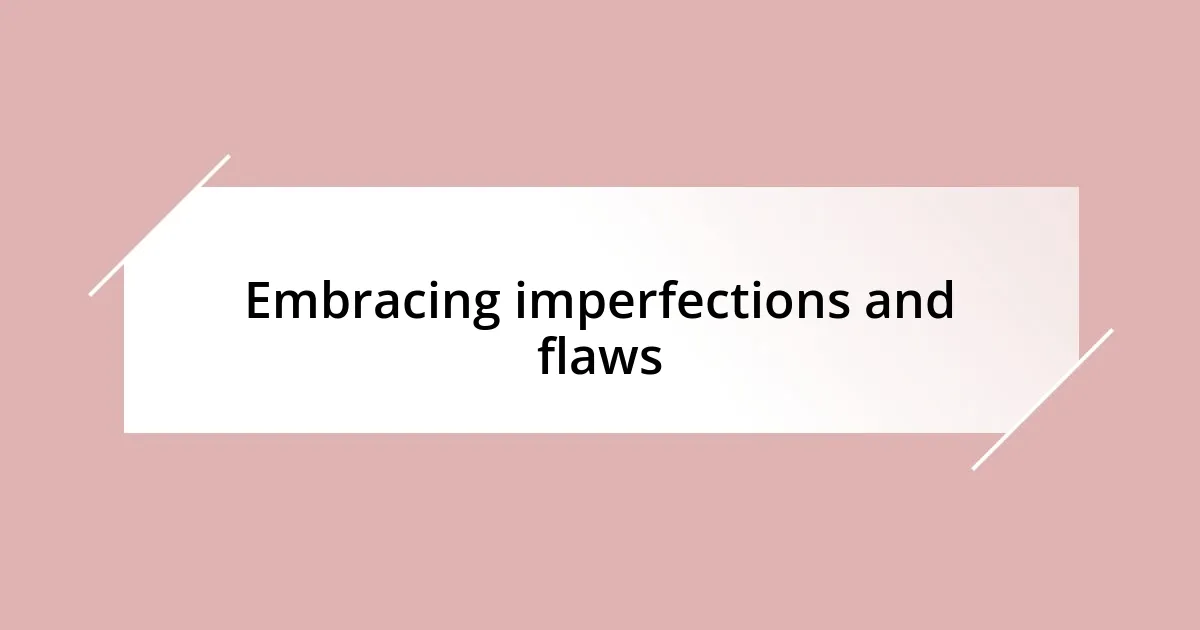
Embracing imperfections and flaws
Embracing my imperfections has been quite liberating. I used to be my harshest critic, unable to accept even the smallest flaw. But one day, while looking at an old photo of myself, I realized those imperfections marked my journey—they tell my story. Isn’t it funny how the things we often want to hide can actually become symbols of resilience? This perspective allowed me to acknowledge my flaws as essential parts of my identity, rather than obstacles I needed to overcome.
One piece that really shifted my mindset was learning to lean into my imperfections during social interactions. I remember a gathering where I stumbled over my words while sharing a story. Instead of feeling embarrassed, something clicked inside me—I laughed it off. That moment of vulnerability connected me more deeply with others. Have you ever noticed how sharing our slips can foster a sense of community? It’s as if we create a safe space where everyone feels free to be imperfect, and in doing so, we all find ourselves kind of beautiful in our shared humanity.
I also found joy in the little quirks that I once deemed flaws. For instance, my tendency to be a perfectionist can lead me into a rabbit hole of overthinking. But I’ve started to embrace it humorously. The other day, while obsessively reorganizing my bookshelf, I paused to chuckle at the fact that arranging books by color instead of genre felt oddly satisfying. It’s a reminder that perfection isn’t the goal; embracing the quirky, messy parts of myself offers more room for joy and acceptance. So, why not dance with our flaws? Instead of fighting them, let’s treasure the unique texture they bring to our lives.
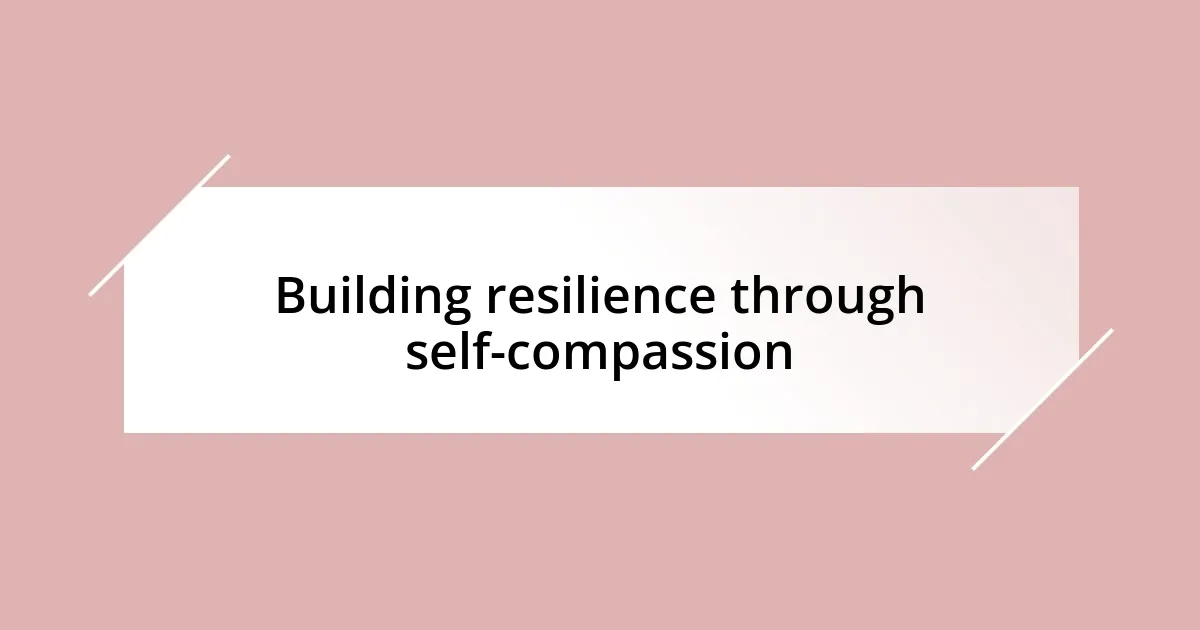
Building resilience through self-compassion
Building resilience through self-compassion has been one of my greatest revelations. I remember a tough day when everything felt overwhelming. Instead of pushing myself to ‘toughen up’ and fend off the sadness, I paused and sat with it. Asking myself: “What do I need right now?” led me to comfort myself in ways I had never thought possible. It was like giving my inner child a hug. That moment taught me that acknowledging our struggles instead of dismissing them provides a solid foundation for nurturing resilience.
On another occasion, I faced a setback that left me feeling disheartened. I was getting ready for a big presentation and, just as I thought I was prepared, I stumbled. In the past, I would have spiraled into self-reproach, but I decided to treat myself with compassion instead. Simply reflecting, “It’s okay; mistakes are part of growth,” transformed the experience. I still recall taking a few deep breaths, allowing myself to feel the disappointment without judgment. It felt empowering to see that resilience isn’t just about bouncing back—it’s about embracing vulnerability and treating myself gently along the way.
When I look back at these experiences, I realize they’ve solidified my understanding that resilience doesn’t mean being unbreakable. It actually involves being tender with ourselves amid life’s storms. Have you ever noticed how self-compassion makes you stronger in the face of adversity? By allowing myself to be vulnerable, I’ve discovered deeper layers of strength I never knew were there. It’s as if each act of self-kindness builds a bridge over the emotional chasms, making it easier not just to walk but to dance across them.
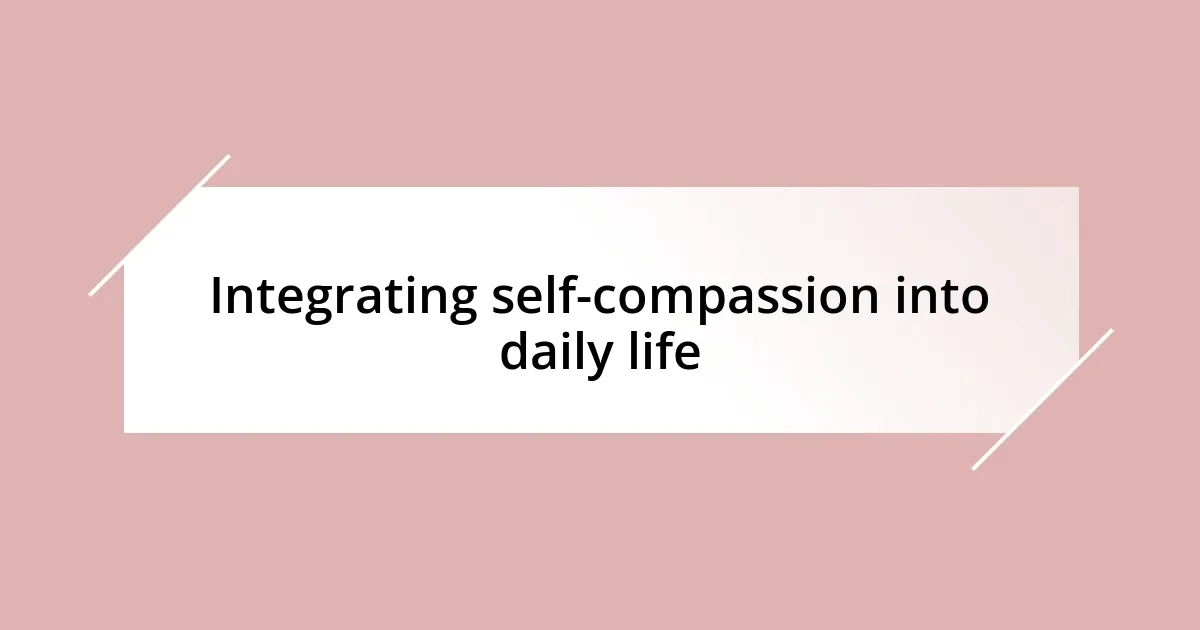
Integrating self-compassion into daily life
Integrating self-compassion into my daily life has transformed ordinary moments into opportunities for care. I remember waking up one morning feeling particularly out of sorts; to combat this heaviness, I made a point to check in with myself. Instead of rushing into my day with a long list of tasks, I poured a cup of tea and sat quietly, asking, “What do you need today?” Just that small shift was like giving myself permission to pause. Isn’t it amazing how a moment of kindness can change the course of a whole day?
As I weave self-compassion into my routine, I try to remind myself of its essence when facing challenges. When I find myself in a tough spot—like getting critique on a project—I consciously choose to replace self-criticism with gentle reassurances. For example, the other day, when a colleague pointed out some mistakes in my work, instead of going down a spiral of self-doubt, I took a deep breath and thought, “This is a chance to learn and grow.” That internal shift felt like wrapping myself in a comforting blanket instead of wearing the barbed-wire armor. Who knew that embracing our flaws could lead to such profound growth?
Additionally, I’ve started incorporating small rituals that prioritize self-compassion in my evenings. After a long day, I light a candle and reflect on moments where I might have been hard on myself. I mentally jot down three things I appreciate about my efforts, however imperfect. It’s like a gratitude practice for myself. I often ask, “What would you tell a friend who struggled today?” The answer always brings me back to gentleness. Have you tried this? It can be surprisingly uplifting to offer ourselves the same kindness that flows effortlessly to those we care about.












